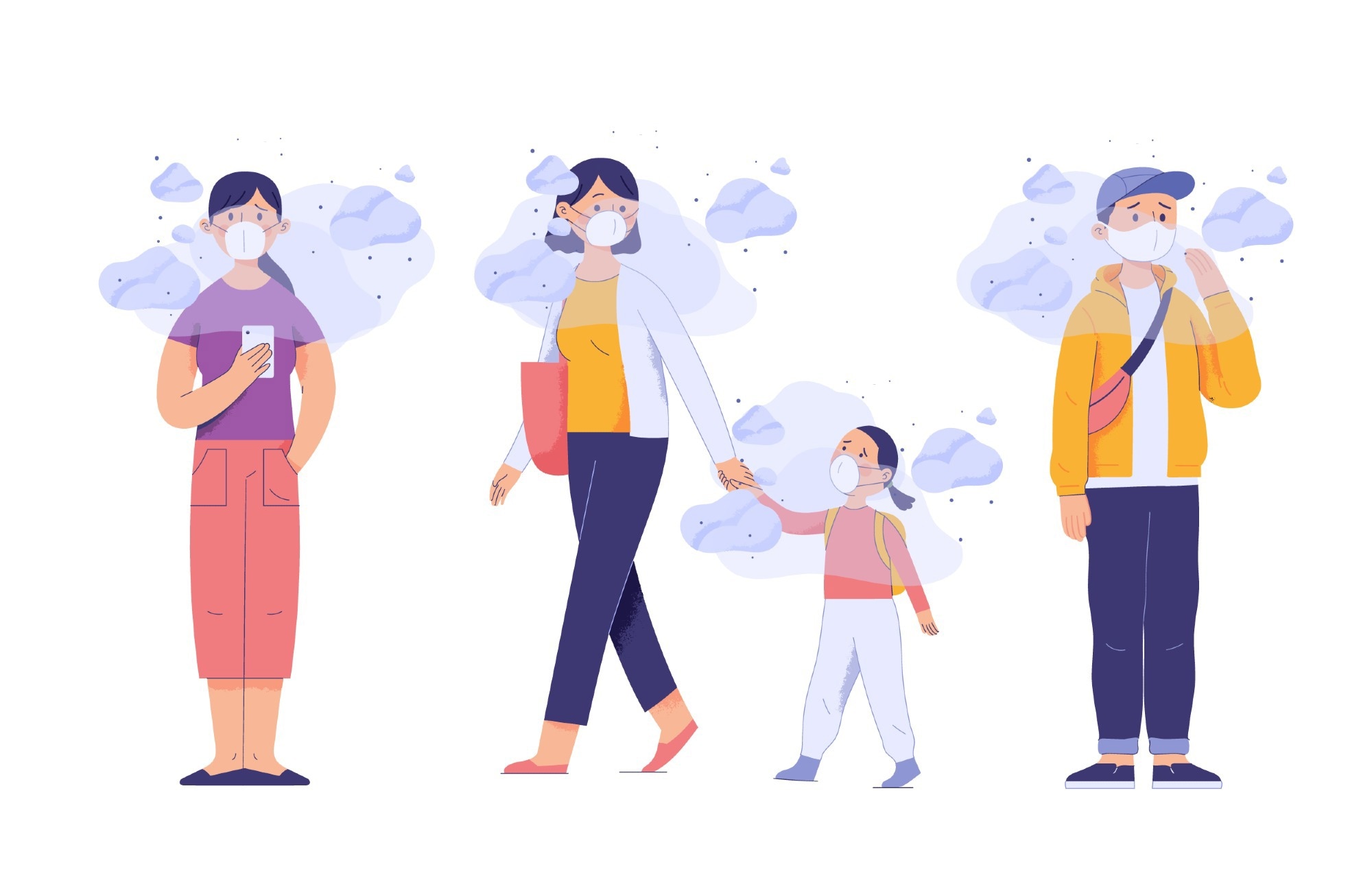A recent study published in the Nature Communications Journal explored associations between prolonged exposure to air pollution and severe coronavirus disease 2019 (COVID-19).
 Study: Long-term exposure to air pollution and severe COVID-19 in Catalonia: a population-based cohort study. Image Credit: pizzastereo/Shutterstock.com
Study: Long-term exposure to air pollution and severe COVID-19 in Catalonia: a population-based cohort study. Image Credit: pizzastereo/Shutterstock.com
Background
Ambient air pollution contributes to the global disease burden. There is limited evidence on the effects of prolonged exposure to air pollution on the incidence and severity of acute respiratory infections. COVID-19 is caused by severe acute respiratory syndrome coronavirus 2 (SARS-CoV-2), primarily manifesting as an acute respiratory illness.
It is established that air pollutants can impair lung immunity against infections. Ecological studies from the early COVID-19 pandemic reported an association between air pollution and a higher risk of COVID-19 hospitalization and mortality. Still, individual-level studies are required to overcome the methodological limitations of these ecological studies.
Several individual-level studies have reported associations between air pollution exposure and COVID-19-related hospitalization, especially for particulate matter < 2.5 μm in diameter (PM2.5); estimates for nitrogen dioxide (NO2) are less consistent in the literature.
However, there are numerous knowledge gaps due to the heterogeneity in COVID-19 severity or mortality estimates.
About the study
The present study examined the associations between air pollution exposure and COVID-19 severity and mortality in 2020 in Catalonia, Spain. They created a population-based cohort of Catalonian adults as part of a different project. Participants were identified from a registry of insured individuals using unique identifiers.
Primary care, urgent care, and acute hospital discharge databases were linked using the identifiers. Data on SARS-CoV-2 test results were accessed from a surveillance system. The primary outcome was hospitalization related to COVID-19.
Secondary outcomes included hospital length of stay (LOS), admission to an intensive care unit (ICU), and death.
The main analysis considered COVID-19 diagnoses from March to December 2020, which did not include diagnoses from nursing homes. The researchers assessed exposure to ambient PM2.5, ozone, and NO2 levels.
They used Cox proportional hazards models to identify associations between the mean air pollution in 2019 and COVID-19-related hospital or ICU admission and death in separate single- and two-pollutant models.
Negative binomial regression models were used to investigate the association between annual mean air pollution and LOS.
The main analytic model was adjusted for sex, age, smoking status, individual income, health region, urbanicity, the proportion of non-Spanish nationals, the weekly average proportion of positive tests, small area socioeconomic index, and the distance to the nearest primary care center. Additionally, six sensitivity analyses were performed.
Findings
The researchers included more than 4.66 million individuals, predominantly females, with an average age of 53.6. There were 340,608 diagnoses of COVID-19 in 2020. Most cases (73%) were diagnosed at primary care centers.
Hospitalization was required for 14% of COVID-19 cases, and 1.4% were admitted to ICUs. Overall, COVID-19-related death occurred in 3% of cases.
Nearly 37% of COVID-19 deaths were among non-hospitalized patients. The median LOS in the hospital was seven days. The annual average estimates of air pollution were 13.9 μg/m3 for PM2.5, 91.6 μg/m3 for ozone, and 26.2 μg/m3 for NO2.
Higher annual average PM2.5 or NO2 exposure was associated with an increased risk of COVID-19 outcomes in single-pollutant models.
PM2.5 or NO2 exposure was positively associated with hospital or ICU admission, LOS, and death. In two-pollutant models, PM2.5 exposure was positively associated with hospitalization and hospital LOS after adjusting for NO2.
Similarly, NO2 retained its positive association with hospital or ICU admission after adjusting for PM2.5.
There was a negative association with COVID-19 outcomes for ozone exposure in single-pollutant models, but it was positive or null after adjusting for NO2. In the two-pollutants model, ozone exposure was positively associated with LOS.
Sensitivity analyses reproduced similar findings except when COVID-19 diagnoses from nursing homes were considered.
In the subset with laboratory-confirmed COVID-19 diagnoses, the associations were similar for hospital or ICU admission as in the main analysis, albeit at a smaller magnitude.
The team identified positive associations of black carbon (BC) exposure with COVID-19-related hospital or ICU admission, LOS, and death.
Conclusions
Taken together, the study showed a positive association between PM2.5, NO2, or BC exposure and severe COVID-19. The association between ozone exposure and COVID-19 outcomes was null or positive when adjusted for NO2 in two-pollutant models.
Overall, the findings underscore the importance of decreasing air pollution to augment public health.